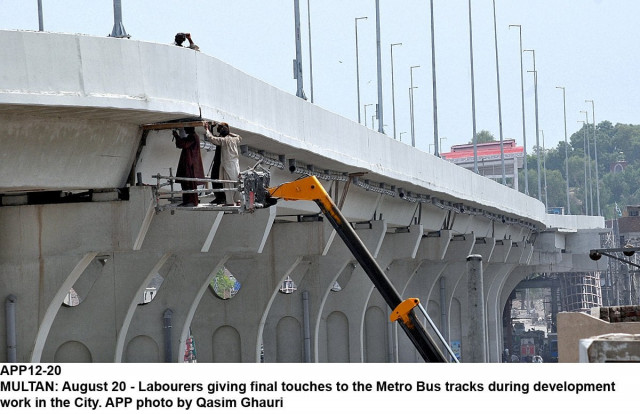Justice Amir Hani recuses himself from Orange Line project case
Cites personal reasons for not hearing the case

Cites personal reasons for not hearing the case. PHOTO: APP
Justice Muslim was heading the bench, comprising Justice Ejaz Afzal Khan, Justice Sh Azmat Saeed, Justice Umar Ata Bandial and Justice Ijazul Ahsan.
PTI wants to become party in Orange Line case
On Monday, Justice Muslim said he had decided to recuse himself from the bench due to personal reasons. The counsel for Punjab Mass Transit Authority requested the bench to fix the next date in order to resume hearing at the earliest.
However, Justice Muslim said he could not give a new date as he was not hearing the case. “[The SC] Chief Justice Mian Saqib Nisar will reconstitute the bench,” he added. Justice Muslim has also recused himself from hearing the Panamagate case.
Sources say the judge did not wish to be part of the bench, because of his impending retirement in March. However, a senior lawyer claimed that Justice Hani’s decision may have something to do with his son’s current role of providing assistance to the Punjab government’s leading counsel Makhdoom Ali Khan.
The Punjab government is already finding itself in trouble with regard to the OLMT project as international experts have also submitted contradictory environmental assessment reports on it.
The SC on Oct 14 appointed a commission comprising technical experts – Typsa-Asian Consulting Engineers and Prof Robin Coningham – for re-verifying the National Engineering Services Pakistan’s (Nespak) report, titled ‘Vibration Analysis of Viaduct Evaluation of Effects on Heritage Buildings’.
In the Nespak report it was claimed that there was no threat to any of the five heritage buildings either during the construction of viaducts or during the operation of the electric train.
Fate of Orange Line hangs in the balance
However, the report compiled by Prof Coningham raised several objections over Nespak report, which had allowed the Punjab government to launch the project.
Prof Coningham observed that the train route contravened clause-22 of the Antiquities Act of 1975, which stated that no new construction could be undertaken within a distance of 200 feet of a protected immovable antiquity.
It said the train route also flouted clause-23 of the same act, which barred placing of neon signs or other kind of advertisements, including signage and poles near the protected immovable antiquity.
Nespak’s 2015 report did not contain any physical or technical evaluation of the stability of the five monuments. It also lacked data about nature of subsoil between viaduct piers and monuments, it said.
Typsa Asian Consulting Engineers (Pvt) Ltd endorsed report compiled by Nespak, stating that the approach adopted by Nespak was conservative that resulted in higher than actual vibration velocities. Nespak, it stated, had rightly concluded that there would be no adverse effect on any of these sites.
Messr’s Typsa-Asian Consulting Engineers (Pvt) Ltd also concluded that Nespak’s report complied with international codes and standards and the results were correct.
Last week, Nespak – while submitting objection – contended that one of the members of commission Professor Robin Coningham – exceeded his domain and prepared the report beyond its scope.
Nespak further contended that professor’s findings focused on the interpretation and the applicability of the two statutes including the Antiquities Act, 1975 and the Punjab Special Premises (Preservation) Ordinance, 1985 despite the fact that he was not a law expert.
Published in The Express Tribune, January 3rd, 2017.


















COMMENTS
Comments are moderated and generally will be posted if they are on-topic and not abusive.
For more information, please see our Comments FAQ